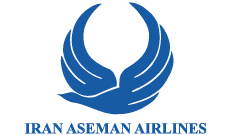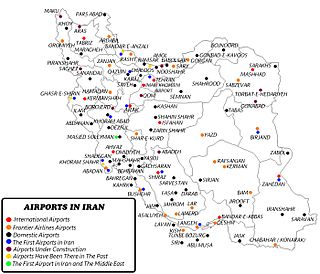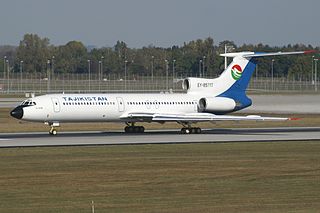
The National Airline of Iran, branded as Iran Air, is the flag carrier of Iran, which is headquartered at Mehrabad Airport in Tehran. As of 2023, it operates scheduled services to 72 destinations in Asia and Europe. Iran Air's main bases are Imam Khomeini International Airport and Mehrabad International Airport, both serving Tehran, the capital of Iran. Domestically, Iran Air is commonly known as Homa, which is the name of a mythical Persian phoenix or griffin, and also the acronym of Iran National Airlines in the Persian language. The airline's cargo division, Iran Air Cargo, operates scheduled services internationally using one cargo aircraft.
This is a list of aviation-related events from 1980.
This is a list of aviation-related events from 1983.
This is a list of aviation-related events from 1985.
This is a list of aviation-related events from 1979.

Pan Am Flight 759 was a regularly scheduled domestic passenger flight from Miami to San Diego, with en route stops in New Orleans and Las Vegas. On July 9, 1982, the Boeing 727 flying this route crashed in the New Orleans suburb of Kenner after being forced down by a microburst shortly after takeoff. All 145 on board, as well as 8 people on the ground, were killed.

Iran Aseman Airlines is the third-largest Iranian airline headquartered in Tehran. It operates scheduled domestic passenger services and regional international services.
Saha Airlines is an Iranian airline based in Tehran that operates scheduled domestic flights.

Mehrabad International Airport, is an airport serving Tehran, the capital city of Iran. Prior to the construction of the larger Imam Khomeini International Airport in 2007, Mehrabad was Tehran's primary airport in both international and domestic traffic, but now serves only domestic flights. Despite this, in 2016, Mehrabad Airport was the busiest airport in Iran in terms of passengers, handling 16,678,351 passengers in total. The airport is also used by the Government of Iran and is one of the bases of the Iranian Air Force.

One-Two-Go Airlines Flight 269 (OG269) was a scheduled domestic passenger flight from Bangkok to Phuket, Thailand. On 16 September 2007, about 15:41 ICT, the McDonnell Douglas MD-82 operating the flight crashed into an embankment beside runway 27 at Phuket International Airport (HKT) bursting into flames upon impact during an attempted go-around after an aborted landing, killing 90 of the 130 persons on board. It is the third deadliest aviation incident to occur in Thailand.

Iran Air Flight 291 was a flight from Mashad Airport to Tehran-Mehrabad Airport that crashed on 21 January 1980 during its approach to Tehran-Mehrabad runway 29 in foggy and snowy weather conditions, killing all 128 people on board. At the time, Iran Air Flight 291 was the deadliest aircraft disaster in Iranian history.

The Civil Aviation Authority of Islamic Republic of Iran (CAA.IRI), is Iran's civil aviation agency. It is the statutory corporation which oversees and regulates all aspects of civil aviation in Iran. The organization was established in July 1946 and its headquartered at Mehrabad International Airport in Tehran. It investigates aviation accidents and incidents in Iran.

Sol Líneas Aéreas Flight 5428 was a passenger flight which crashed near Los Menucos, Argentina, on 18 May 2011, killing all 22 people on board. The aircraft involved, a Saab 340, was operating Sol Líneas Aéreas' scheduled domestic service from Neuquén to Comodoro Rivadavia.

Iran Air Tours Flight 956 was a Tupolev Tu-154M which crashed 230 miles (370 km) south-west of Tehran on 12 February 2002. During a non precision approach to runway 11, the airliner impacted the Kuh-e Sefid Mountain at an altitude of 9,100 feet (2,800 m), three nautical miles left of the runway centerline. All 12 crew and 107 passengers were killed in the crash. The aircraft was carrying four government officials. It remains the 5th worst plane crash in Iranian history.

Tajikistan Airlines Flight 3183 was a Tupolev Tu-154B-1 that crashed on 15 December 1997 on approach to Sharjah Airport in the United Arab Emirates. There was a sole survivor, the navigator, from a crew of seven and seventy-nine passengers. Investigators determined the cause of the accident was pilot error leading to controlled flight into terrain.

Iran Aseman Airlines Flight 3704 was a scheduled Iranian domestic passenger flight from Iranian capital Tehran Mehrabad International Airport to Yasuj in southwest Iran. On 18 February 2018, during its approach to Yasuj, the aircraft serving the flight, an ATR 72-212 operated by Iran Aseman Airlines, crashed into Mount Dena in the Zagros Mountains near Noqol village in Semirom county, Isfahan Province. All 66 people on board, including 60 passengers and 6 crew members, were killed.

Ryan International Airlines Flight 590 was a cargo flight carrying mail for the United States Postal Service from Greater Buffalo International Airport (BUF) in Buffalo, New York, to Indianapolis International Airport (IND) in Indiana, with a stopover at Cleveland Hopkins International Airport (CLE) in Cleveland, Ohio. On February 17, 1991, the McDonnell Douglas DC-9-15RC operating the flight crashed on takeoff from Cleveland during icing conditions. Both pilots, the aircraft's only occupants, were killed. The National Transportation Safety Board (NTSB) determined that the causes of the crash were the flight crew failing to deice their aircraft, and the inexperience of the Federal Aviation Administration (FAA), McDonnell Douglas, and Ryan International Airlines with icing condition on DC-9-10 aircraft.












